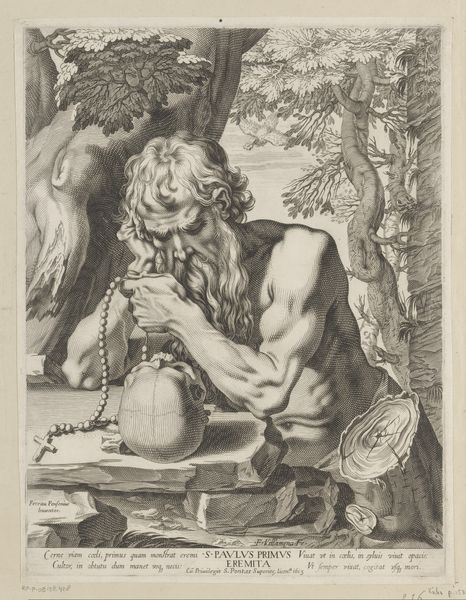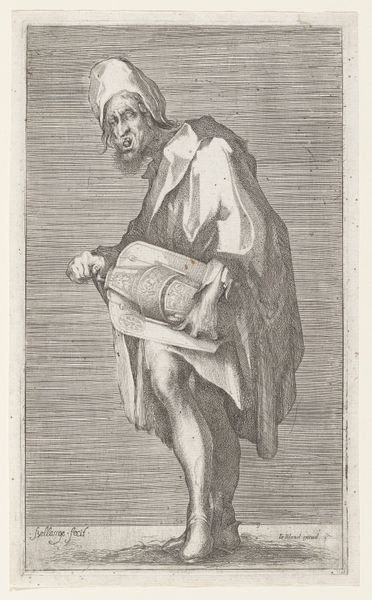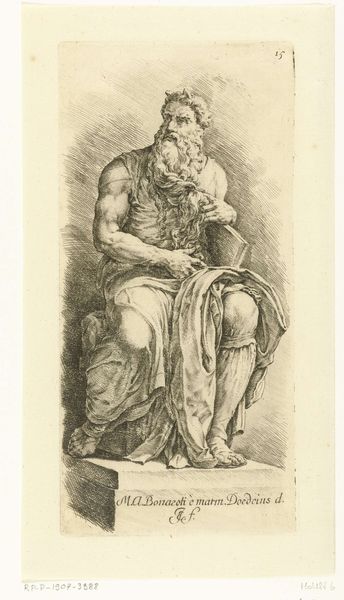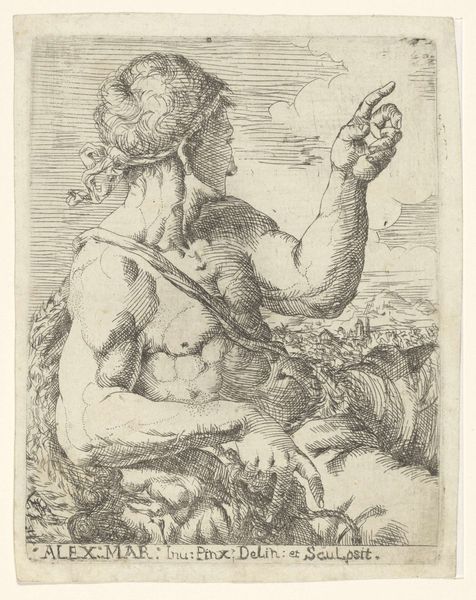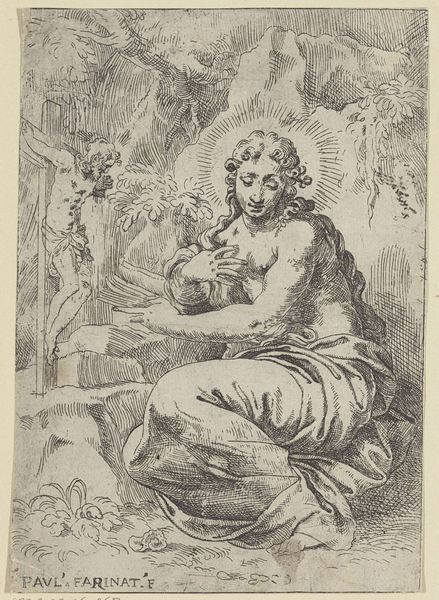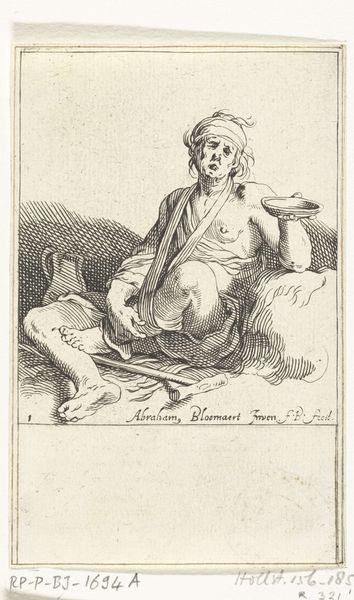
print, etching, glass
#
portrait
#
baroque
# print
#
etching
#
figuration
#
glass
#
genre-painting
Dimensions: height 91 mm, width 84 mm
Copyright: Rijks Museum: Open Domain
Editor: Here we have Thomas Willeboirts Bosschaert’s etching "Bacchant met roemer," created sometime between 1628 and 1654. He looks a bit... tipsy! The light catches his wine glass in such an interesting way. What can you tell me about the social context of this kind of genre scene? Curator: Well, consider what "genre-painting" represented in the 17th century, especially within the context of Dutch society. Beyond the literal depiction of a "Bacchant" figure, draped in grape leaves, raising a roemer filled with wine. Bosschaert is engaging with ideas about social life. It isn't simply documentation; this print enters a cultural discourse. How might prints like this participate in shaping public perceptions about wealth? Editor: So, these prints weren't just about portraying everyday life, but also influencing the ideas about excess? I'm curious; what sort of social function would a "Bacchant" serve then, as a subject? Was it a moralizing tale? Curator: Perhaps, but it's a complex question. Do you think the presence of glass indicates a societal commentary? How did wealth distribution shape the role of the public? The question isn’t only about visible objects but it should be approached in that manner. It is as a vehicle for the distribution and dissemination of artistic themes and social messages. Editor: I hadn't considered how prints functioned to reinforce or challenge norms! Curator: Precisely! By questioning the role and consumption habits of prints in society, we can gain fresh insight. Editor: I suppose that helps me understand it in a deeper context. Thank you!
Comments
No comments
Be the first to comment and join the conversation on the ultimate creative platform.


